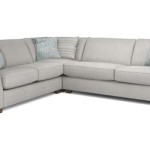How To Clean Feather-Filled Sofa Cushions
Feather-filled sofa cushions offer a luxurious level of comfort, but they require specific cleaning methods to maintain their plushness and longevity. Improper cleaning can damage the feathers and the cushion ticking. This guide provides comprehensive instructions for cleaning feather-filled cushions, covering regular maintenance and addressing spills and stains.
Regular Maintenance: Regular maintenance is crucial for preserving the quality of feather-filled cushions. Fluffing cushions daily helps redistribute the feathers and prevent them from clumping. This simple action maintains the cushion's shape and comfort. Weekly vacuuming with an upholstery attachment removes surface dust, dirt, and allergens, contributing to a healthier and cleaner environment.
Airing Out Cushions: Airing out feather-filled cushions is highly recommended. Fresh air helps to remove trapped moisture and odors, which can lead to mildew growth and unpleasant smells. Ideally, place cushions outdoors in a shaded area on a dry, breezy day. Avoid direct sunlight, as it can fade the fabric. Allowing cushions to air for several hours can significantly refresh them.
Spot Cleaning: Addressing spills and stains promptly prevents them from setting and becoming permanent. When a spill occurs, immediately blot the affected area with a clean, absorbent cloth. Avoid rubbing, which can spread the stain and damage the fabric. For water-based spills, use a damp cloth to gently blot the area. For oil-based spills, sprinkle baking soda or cornstarch onto the stain to absorb the oil. Let it sit for a few hours before vacuuming it up.
Deep Cleaning Methods: Periodic deep cleaning is essential for maintaining the hygiene of feather-filled cushions. There are two primary methods: professional dry cleaning and hand washing. Choosing the right method depends on the cushion's material and care instructions.
Professional Dry Cleaning: Professional dry cleaning is the safest and most recommended method for deep cleaning feather-filled cushions, especially for delicate fabrics. Professional cleaners possess the expertise and equipment to handle cushions correctly, minimizing the risk of damage. Always check the cushion’s care label to confirm dry cleaning is suitable.
Hand Washing (For Specific Cushions): Hand washing is an option for certain cushion types, but it requires careful consideration and execution. Before proceeding, check the care label for specific instructions. If hand washing is permissible, use a mild detergent specifically designed for delicate fabrics. Avoid harsh chemicals or bleach, which can damage the feathers and fabric.
Hand Washing Steps: Fill a bathtub or large basin with lukewarm water and add the detergent. Gently submerge the cushion and allow it to soak for a short period, typically no more than 30 minutes. Avoid excessive agitation, which can damage the feathers. Drain the soapy water and refill the tub with clean water to rinse. Repeat the rinsing process until all traces of detergent are removed. Gently squeeze out excess water without wringing the cushion, which can distort its shape.
Drying Feather-Filled Cushions: Proper drying is crucial to prevent mildew and maintain the cushion's shape. After washing or spot cleaning, allow the cushion to air dry completely in a well-ventilated area. Avoid direct sunlight, which can fade the fabric and cause the feathers to become brittle. Turn the cushion regularly to ensure even drying. Fluffing the cushion periodically during the drying process helps redistribute the feathers and prevent clumping. A low-heat dryer can be used to expedite the drying process, but ensure the dryer is set to a gentle cycle and the cushion is tumbled with clean tennis balls to aid in fluffing and prevent clumping.
Caring for Cushion Covers: Cushion covers provide an additional layer of protection and can be cleaned more frequently than the cushions themselves. Most cushion covers are removable and can be machine washed according to the care instructions on the label. Choose a gentle detergent and avoid harsh chemicals or bleach. Air dry or tumble dry on a low-heat setting to prevent shrinkage. Replace covers only when they are completely dry to prevent mildew growth inside the cushions.
Addressing Odors: Unpleasant odors can sometimes develop in feather-filled cushions. Regular airing and cleaning usually prevent this, but if odors persist, sprinkle baking soda liberally over the cushion's surface. Allow the baking soda to sit for several hours or overnight to absorb the odors. Thoroughly vacuum the cushion to remove the baking soda.
Protecting Cushions: Protecting cushions from spills and stains prolongs their lifespan and maintains their appearance. Consider using a fabric protector spray designed for upholstery. These sprays create a barrier that repels liquids and stains, making cleaning easier. Always test the spray on an inconspicuous area first to ensure it doesn't damage the fabric or alter its color. Regularly using throws or blankets over cushions offers an extra layer of protection, especially in high-traffic areas.

How To Maintain Feather Filled Couches

How To Fix Sagging Couch Cushions Thistlewood Farm

How We Clean Our Crate Barrel Lounge Ii Couch Chrissy Marie Blog

How To Clean Duck Feather Couch Cushions By Hand Tiktok Search

How To Wash Feather Pillow Inserts The Creek Line House

How To Clean Duck Feather Sofa Cushions Ehow

How To Fix Sagging Couch Cushions Thistlewood Farm

Washing Feather Pillows How To Clean Bed

How To Maintain Down Sofa Cushions

4 Ways To Fix Sagging Sofa Cushions Wikihow








